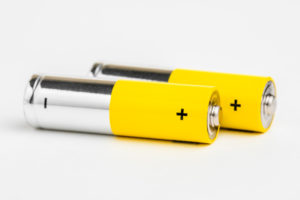The cold weather months are fast approaching. Your company needs to prepare by making sure all gas detection equipment is in tip-top shape. And you might want to invest in some backup portable multigas detectors, which can be beneficial in an emergency situation. Here is a guide to using portable gas detectors at your company during colder weather.

Check for Damage
As cold weather sets in, your company needs to inspect every portable gas leak detector on-site. Look for damage such as cracks in the case halves and tears in the case molding. Damage like this can let moisture into the interior, which can lead to ice forming inside the detector or cause the instruments to stop working. Also check the filters on your company’s portable gas detector monitors for dirt or damage, which can prevent the instruments from properly detecting gas.
Check the Batteries
Before the weather hits below freezing, check the batteries of your company’s gas detectors. Look for cracks, tears, and leaks, and make sure there is no corrosion on the contacts. The life span of a portable gas detector’s batteries is directly connected to how many charge cycles have been used. A battery’s performance deteriorates over time, meaning that older batteries will run for a shorter time than a newer one.
To determine the age of the batteries of your company’s portable gas detector, look at the manufactured date on the label, then decode using the serial number. Or, you can find out by calling the customer service number of the manufacturer. Knowing how old the batteries are will help make sure the gas detectors operate for the maximum rated run time.
If your company uses alkaline batteries, keep spare ones handy, because this type of battery tends to have a short run time in colder months. Also make sure batteries are charged at the recommended temperature. Temperatures below this can cause batteries to not charge properly. Additionally, cold weather below -4°F (-20°C) may cause instruments to get sluggish or the display of the portable gas detection monitor to dim or go blank. If this happens, warm the portable detector up indoors as soon as you can, then bump test the display to see if you get a response.
Keep Detector’s Warm Enough

Protecting your company’s portable gas leak detectors from malfunctioning in extremely cold weather is important, especially regarding sensors. The sensors are the heart and brain of the gas leak detector; these are what makes gas detectors function. Sensors can give inaccurate readings when used below the recommended temperatures.
To warm the portable detector up quickly in below freezing temperatures, put the instruments in your coat, with tubing extending out near the coat’s collar close to your nose and mouth. Your body heat will keep the detector warm enough to function properly and can monitor toxic and combustible gases in the air.
In colder months, your company probably uses several heating sources to keep workers and equipment warm. These heating sources can also dry out the air, which affects the electrochemical sensors and cause electrolytes to dry out. To prevent this from happening, store your company’s portable gas detectors in an area with an ambient humidity of 40%-50%. And remember to bump test and calibrate sensors and other instruments so the detectors are working at peak performance.
DOD Technologies, Inc., has more information about how to use a portable gas detector in cold weather. Contact us on our website at https://www.windycitywebdesigns.com/clients/dod/contact-us/, email us at solutions@dodtec.com, or call us at 815-680-6086.






